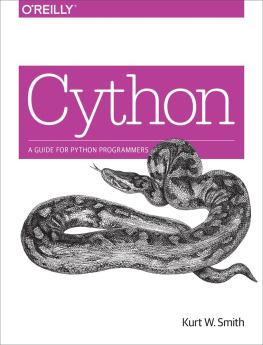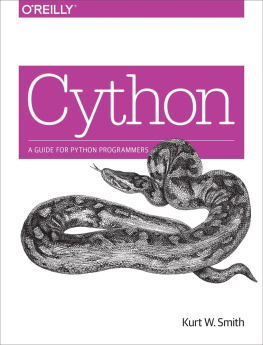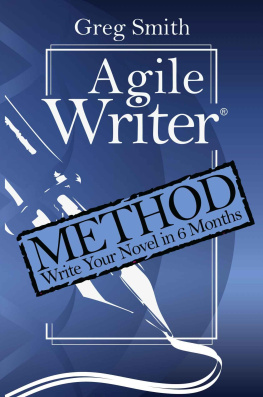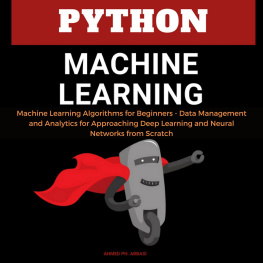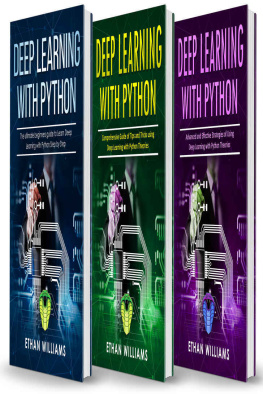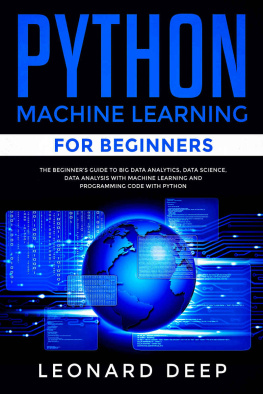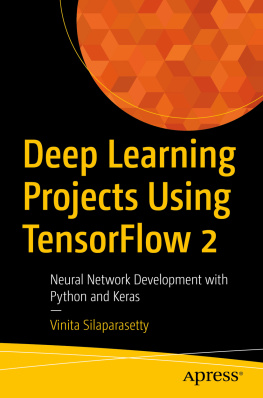Smith - DEEP LEARNING WITH PYTHON: Simple and Effective Tips and Tricks to Learn Deep Learning with Python
Here you can read online Smith - DEEP LEARNING WITH PYTHON: Simple and Effective Tips and Tricks to Learn Deep Learning with Python full text of the book (entire story) in english for free. Download pdf and epub, get meaning, cover and reviews about this ebook. year: 2020, genre: Home and family. Description of the work, (preface) as well as reviews are available. Best literature library LitArk.com created for fans of good reading and offers a wide selection of genres:
Romance novel
Science fiction
Adventure
Detective
Science
History
Home and family
Prose
Art
Politics
Computer
Non-fiction
Religion
Business
Children
Humor
Choose a favorite category and find really read worthwhile books. Enjoy immersion in the world of imagination, feel the emotions of the characters or learn something new for yourself, make an fascinating discovery.

- Book:DEEP LEARNING WITH PYTHON: Simple and Effective Tips and Tricks to Learn Deep Learning with Python
- Author:
- Genre:
- Year:2020
- Rating:5 / 5
- Favourites:Add to favourites
- Your mark:
- 100
- 1
- 2
- 3
- 4
- 5
DEEP LEARNING WITH PYTHON: Simple and Effective Tips and Tricks to Learn Deep Learning with Python: summary, description and annotation
We offer to read an annotation, description, summary or preface (depends on what the author of the book "DEEP LEARNING WITH PYTHON: Simple and Effective Tips and Tricks to Learn Deep Learning with Python" wrote himself). If you haven't found the necessary information about the book — write in the comments, we will try to find it.
Smith: author's other books
Who wrote DEEP LEARNING WITH PYTHON: Simple and Effective Tips and Tricks to Learn Deep Learning with Python? Find out the surname, the name of the author of the book and a list of all author's works by series.
DEEP LEARNING WITH PYTHON: Simple and Effective Tips and Tricks to Learn Deep Learning with Python — read online for free the complete book (whole text) full work
Below is the text of the book, divided by pages. System saving the place of the last page read, allows you to conveniently read the book "DEEP LEARNING WITH PYTHON: Simple and Effective Tips and Tricks to Learn Deep Learning with Python" online for free, without having to search again every time where you left off. Put a bookmark, and you can go to the page where you finished reading at any time.
Font size:
Interval:
Bookmark:
- Chapter One - an introduction to deep learning, how it works and what its limitations are
- Chapter Two a discussion on why we use Python for deep learning and a look at some of the more popular Python libraries used for deep learning
- Chapter Three an introduction to neural networks, what they are, and how they work. We look at examples such as regression, clustering, and classification, and we look at the elements a neural network is made from.
- Chapter Four next, we turn to recurrent neural networks (RNNs) and LSTM (Long Short-Term Memory) units. This takes us into feedforward networks, RNNs, and Backpropagation Through Time. Then we look at vanishing/exploding gradients, hyperparameter tuning, and remote dependencies.
- Chapter Five we look at deep convolutional neural networks and how to use them for image processing tasks. We look at how CNNs work and how to do downsampling and max-pooling with them.
- Chapter Six in this chapter, you get an introduction to deep reinforcement learning.
- Chapter Seven now, you get to put everything into practice by building a deep learning model for employee retention predictions, using two of the more popular libraries, Keras and TensorFlow
- Chapter Eight here, we use TensorFlow to build a neural network for recognizing handwritten digits
- Chapter Nine Finally, we look at ways to make sure your deep learning models remain free of bugs.
- Better Earnings Data scientists already earn a decent salary, but, when you specialize in machine learning and deep learning, you can earn an even better salary. On average, machine and deep learning specialists earn around 15% more than a standard data scientist salary so, if you have skills in this area, your resume will certainly stand out head and shoulders above the rest, even if you are not quite at the level of specialist.
- A Growing Demand it is one of the fastest-growing fields in the world, growing at a pace we can't keep up with up; the faster it grows, the more demand there is for it, it's as simple as that.
- It's Time-Saving if you have any experience of machine learning, then you already know that its time-consuming to convert parameters for inputs into features that are easily read by your algorithm. And it's not the easiest job, either. With deep learning, you can use neural nets, the best way of ensuring the conversions are done automatically. Rather than having to take the time to pull histograms, color data, and lots of other metrics from an image dataset, simply give the raw images to the neural net, and it will do it all for you. Yes, that is a rather simplistic way of doing things; it is a bit more complicated than that! The primary challenge lies in getting the neural network to the stage where it can do it all for you, but this does mean you get more time to work on the algorithms, rather than having to waste time on features.
- A Flexible Specialty while it's great to specialize in something specific, you do run the risk of becoming stuck in a rut; at the end of the day, you may find yourself in a field that is limited in where you can work; with deep learning, it's different. It's in demand across most industries and is used to solve all kinds of tasks, such as translation, image recognition, robotics, and so on.
- It's Fun putting careers to one side, why wouldn't you want to learn something that is just so cool? Let's face it; you can use deep learning to make a machine do just about anything you want it to, without having to do much in the way of teaching.
Font size:
Interval:
Bookmark:
Similar books «DEEP LEARNING WITH PYTHON: Simple and Effective Tips and Tricks to Learn Deep Learning with Python»
Look at similar books to DEEP LEARNING WITH PYTHON: Simple and Effective Tips and Tricks to Learn Deep Learning with Python. We have selected literature similar in name and meaning in the hope of providing readers with more options to find new, interesting, not yet read works.
Discussion, reviews of the book DEEP LEARNING WITH PYTHON: Simple and Effective Tips and Tricks to Learn Deep Learning with Python and just readers' own opinions. Leave your comments, write what you think about the work, its meaning or the main characters. Specify what exactly you liked and what you didn't like, and why you think so.


